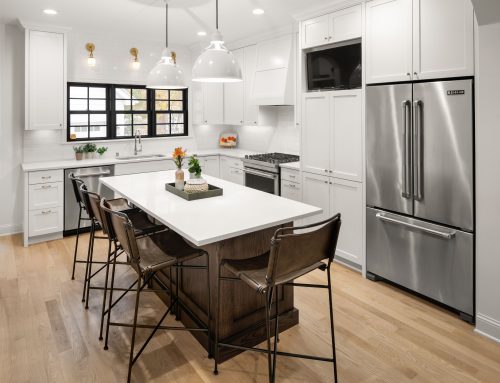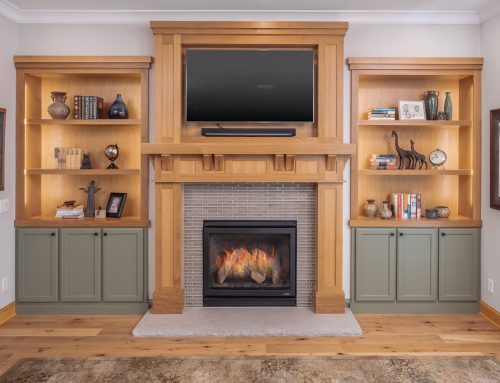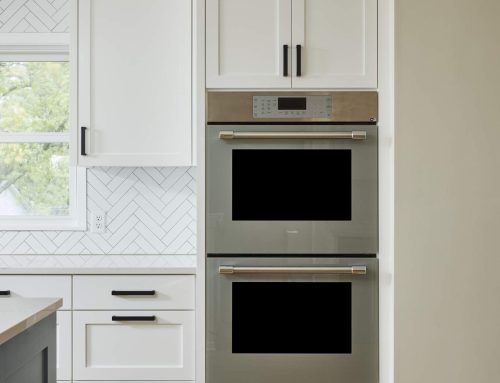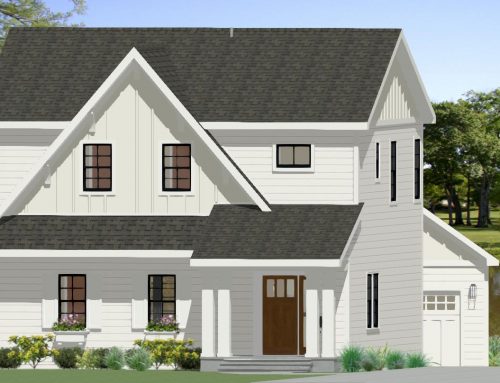Welcome to our comprehensive guide on green kitchen remodeling. The concept of ‘green’ or eco-friendly kitchen remodeling is simple yet profound. It entails the application of environmentally friendly methods and materials in refurbishing a kitchen. This can vary from using recycled materials and installing energy-efficient appliances to creating a natural light source. We aim to help you create a space that is not only aesthetically pleasing but also beneficial to the environment and your health.
Understanding the importance and benefits of a green kitchen will enlighten you on why this approach is gaining popularity in the modern world. Firstly, a green kitchen reduces its environmental footprint by using sustainable materials and energy-saving appliances. This approach significantly decreases waste production and energy consumption, contributing to a healthier planet. Secondly, green kitchens can save you considerable amounts of money over time. Despite the initial cost of some eco-friendly appliances, their efficiency level makes them cost-effective in the long run. Lastly, these kitchens provide a healthier living space. They are designed to promote natural light and ventilation, reducing the use of artificial lighting and promoting better air quality.
In this guide, we will walk you through the process of transforming your kitchen into an eco-friendly space. We will discuss materials to consider, appliances to invest in, and even layout options that promote efficiency. Whether you’re doing a complete kitchen overhaul or just looking for ways to make your kitchen more eco-friendly, this guide will provide practical solutions and ideas to help you achieve your goals, suggesting to reach that through Sicora Design / Build in Minneapolis, a company with experience and high expertise in this field.
What Makes a Kitchen Green?
What exactly is a green kitchen? Essentially, a green kitchen is designed with sustainability and efficiency at its core. It is a space that respects the environment through the use of eco-friendly materials, energy-efficient appliances, and waste-reducing strategies. Its purpose is not just to minimize its environmental impact, but also to contribute to the overall health of the planet.
Sustainable Materials
The principles of a green kitchen are simple but profound. First and foremost is the use of sustainable materials. These are materials that are renewable, recycled, or repurposed, and they are used in everything from the construction of the kitchen itself to the utensils and appliances within it.
Energy Efficiency
The second is energy efficiency. A green kitchen utilizes appliances that consume less energy and implements design strategies that maximize natural light and heat.
Zero-Waste Mentality
Lastly, a green kitchen embraces a zero-waste mentality. This means implementing strategies to reduce, reuse, and recycle wherever possible. Sustainability plays a pivotal role in a green kitchen. Every aspect, from the floor tiles to the light bulbs, is chosen with sustainability in mind. This includes choosing materials that are locally sourced to reduce carbon footprint, opting for appliances with high energy efficiency ratings, and even designing the layout to optimize natural light and heat. By focusing on sustainability, a green kitchen not only reduces its environmental impact but also creates a healthier and more comfortable space for its users.
Elements of a Green Kitchen
Eco-Friendly Materials
The first element of a green kitchen involves the eco-friendly materials used for countertops, cabinets, and floors. These materials, often made from recycled or renewable resources, are not only sustainable but also add a unique, earthy aesthetic to your kitchen. Bamboo, for example, is a popular choice for floors and cabinets due to its fast growth rate and durability. Countertops made from recycled glass or concrete are not only stylish but also extremely durable and easy to maintain.
Energy-Efficient Appliances
Next, energy-efficient appliances play a key role in a green kitchen. These appliances, including refrigerators, dishwashers, and ovens, use less energy than their conventional counterparts, reducing both your energy bill and your carbon footprint. Energy Star-rated appliances, in particular, are designed to maximize efficiency without sacrificing functionality or performance.
Sustainable Kitchen Designs and Layouts
Thirdly, sustainable kitchen designs and layouts contribute to the overall efficiency of the space. This could involve incorporating features that maximize natural light, optimizing the layout for reduced energy use, or using modular designs that allow for easy updates or replacements, reducing the need for complete remodels.
Water-Saving Fixtures
Water-saving fixtures are another vital component in a green kitchen. Adding a low-flow faucet or an efficient dishwasher can significantly reduce water usage. Moreover, water purification systems can be installed, providing clean, filtered water straight from the tap and eliminating the need for bottled water.
Lighting
Lastly, lighting is a key factor in any kitchen remodel, and green kitchens are no exception. Natural lighting is the most eco-friendly option, but when additional lighting is needed, LED lights are the way to go. They use less energy and have a longer lifespan than traditional bulbs, making them a sustainable choice.
Planning Your Green Kitchen Remodel
Eco-Footprint
As you embark on your journey towards a greener kitchen, the first important step is to assess your current kitchen’s eco-footprint. This includes evaluating the energy efficiency of your appliances, the sustainability of your materials, and your current waste and water usage. Understanding your kitchen’s current impact on the environment will help you identify the areas where improvements can be made and set meaningful, achievable goals for your remodel.
Setting a Budget
Setting a budget for your green kitchen remodel is the next crucial step. Eco-friendly appliances and materials, while beneficial in the long run, can sometimes carry a higher upfront cost. However, consider that these investments often pay off in long-term energy savings and sustainability. Research different options, compare prices, and make a detailed budget plan that allows for potential contingencies.
Remodeling Plan
Once you’ve assessed your kitchen and set a budget, it’s time to create your green kitchen remodeling plan. Here, you will decide on the design, layout, materials, appliances, and fixtures for your kitchen. Consider factors such as energy efficiency, water conservation, durability, and recyclability when choosing each element. Remember, a green kitchen doesn’t only mean it’s eco-friendly; it should also be a functional, comfortable space that meets your cooking and dining needs.
Working with a Green Kitchen Remodeling Contractor
Finally, working with a green kitchen remodeling contractor can greatly help navigate the process. A professional with experience in green remodeling will not only bring their expertise to your project but also have access to the best eco-friendly materials and appliances. They can guide you in making the most sustainable choices, ensure the remodel goes smoothly, and help you create a kitchen that’s both beautiful and green. Sicora Design/Build, a highly esteemed company, specializes in transforming your kitchen into an eco-friendly haven through top-notch remodeling services.
Green Kitchen Remodeling Tips
Materials with Low VOC
In the journey towards a green kitchen remodel, the first step involves the careful selection of materials. Opt for sustainable, eco-friendly materials for your countertops, cabinets, and flooring. Bamboo, reclaimed wood, and recycled glass or metal are excellent choices that not only lend an aesthetic appeal but also are durable and sustainable. Look for materials with low VOC (Volatile Organic Compounds) emissions, as these are less harmful to the environment and also contribute to healthier indoor air quality.
ENERGY STAR-rated Appliances
The next crucial aspect to consider is selecting energy-efficient appliances. ENERGY STAR-rated appliances consume less energy and water, thereby reducing your utility bills and carbon footprint. From refrigerators and dishwashers to ovens and cooktops, almost all kitchen appliances come in energy-efficient models. These appliances, while sometimes slightly costlier upfront, pay for themselves in the long run through energy savings.
Maximizing Natural Light
An essential, yet often overlooked, element of green kitchen remodeling is maximizing natural light. Natural light reduces the need for artificial lighting, leading to significant energy savings. Consider larger windows or even a skylight to flood your kitchen with warm, natural light. You can further enhance natural lighting by using light colors for your walls and reflective materials for countertops and backsplashes.
Efficient Kitchen Layout
Creating an efficient kitchen layout is another green remodeling tip. An efficient layout reduces unnecessary movement, saves time, and reduces energy usage. The classic ‘work triangle’ concept, which positions the sink, stove, and refrigerator in a triangular layout, is a tried-and-true method for improving kitchen efficiency.
Recycling and Reusing
Finally, consider recycling and reusing existing materials in your kitchen remodel. Old cabinets can be refurbished, and existing hardware can be reused or repurposed. This not only reduces the demand for new materials but also cuts down on waste, making your remodel more eco-friendly.
Case Study: A Successful Green Kitchen Remodel
In Sicora Design / Build ‘Case Study: A Successful Green Kitchen Remodel‘, we delve into a real-life example of a homeowner who took on the challenge of green kitchen remodeling with remarkable results. The project was initiated with a clear goal in mind – to create a kitchen space that is not only visually appealing but also eco-friendly and sustainable. The planning process was meticulous and thoughtful. The homeowner spent several weeks researching and sourcing sustainable materials that were both durable and low in VOC emissions. Reclaimed wood was chosen for the cabinetry, a decision that not only added a unique aesthetic appeal but also saved several trees. For the countertops, recycled glass was chosen over traditional materials for its low environmental impact. In addition, all appliances selected were energy-efficient models, which would contribute to long-term energy savings.
The execution process was equally detailed. The homeowner partnered with contractors who had a proven track record in green construction. They ensured that the kitchen layout maximizes natural light, reducing the need for artificial lighting. They also made sure to recycle and reuse existing materials where possible, keeping waste to a minimum. Upon completion, the final result was a stunning, environmentally friendly kitchen that exceeded the homeowner’s expectations. But, more than its aesthetic appeal, the benefits realized were manifold. The energy-efficient appliances led to a significant reduction in energy consumption, translating to lower utility bills. The use of sustainable materials ensured a healthier indoor environment, free from harmful toxins.
Furthermore, the efficient kitchen layout facilitated smooth movement and workflow, significantly improving the cooking experience. In conclusion, this case study is a testament to the fact that green kitchen remodeling, while requiring thoughtful planning and execution, can result in a beautiful, functional, and sustainable kitchen space. It serves as an inspiration for homeowners looking to embark on their green remodeling journey.
Conclusion
In conclusion, the impact of a green kitchen remodel on the environment is significant and cannot be overstated. Our choices, as homeowners, have a profound effect on the world around us. By opting for eco-friendly materials, energy-efficient appliances, and sustainable design principles, we can help reduce carbon emissions, conserve natural resources, and promote healthier indoor air quality. The case study highlighted in this guide provides a clear demonstration of how a green kitchen remodel can lead to lower energy consumption and contribute to a healthier indoor environment.
Reiterating the importance of green kitchen remodeling is essential in the grand scheme of sustainable living. It is not just about creating a space that looks aesthetically pleasing; it’s about making a conscious decision to reduce our carbon footprint and contribute to a healthier planet. The benefits extend beyond the environment; a green kitchen remodel can also lead to significant cost savings in the long run. Energy-efficient appliances and fixtures can greatly reduce utility bills, while sustainable materials are often more durable and require less maintenance, saving both time and money.
Lastly, as we wrap up this comprehensive guide, we want to encourage all homeowners to consider a green kitchen remodel. You have the power to make a difference, one room at a time. Remember, every small step towards sustainability counts. By considering a green kitchen remodel, you’re not only improving your own living space but also contributing to a larger global cause. The journey towards a more sustainable future starts at home, and your kitchen could be the first step in that direction. Enlist the expertise of Sicora Design/Build in Minneapolis, and achieve exceptional results for your green kitchen remodel.
Name, Address, and Phone
Sicora Design / Build
5601 W Lake St, Minneapolis, Minnesota, 55416, US
(952) 592-9380
Social Media’s







